The Video Game Library Newsletter - Vol. #014
A big week for Video Game Books in Japan! Plus an amazing Ys VIII care-package, a look back on some early 80's Famicom encyclopedias, and a great interview with award-winning author, E.C. Myers!
Welcome back to The Video Game Library Newsletter!
If there’s a word that sums up this week… it’s delays. Nearly 10 gaming books originally slated for release between June 22–29 have quietly slipped to later dates - some by a few weeks, others by months. Whether it’s a deliberate drip-feed to maintain hype or just the realities of publishing, it’s a trend we’ve been noticing more and more lately. All that said, it does make the books that did arrive this week feel all the more worth celebrating.
Remember, if you enjoy all the work that goes into these weekly digests, please consider supporting at the Paid tier.
In News & Highlights, we’ve got the official reveal of Little Nightmares: The Lonely Ones by E.C. Myers, a brand-new title from Boss Fight Books, and some cozy adventure game coverage coming this fall from Pen & Sword. There’s also a stacked lineup of Japanese releases this week - from Death Stranding 2: On The Beach to Blue Archive Artworks Vol. 3 and even a Garten of Banban activity book.
Behind the Shelves offers a peek at our ongoing cataloging marathon and the latest care package that has arrived, which is AMAZING!
The Recommended Read spotlight takes us deep into samurai-era Japan with Ubisoft and Larousse’s educational Assassin’s Creed Discovery Book tie-in.
And for this week’s From the Archives, we’re jumping back to the mid-80s to revisit a beloved and Famicom-era staple: Family Computer Daizukan!
Finally, we round things out with a fantastic Community Interview with none other than E.C. Myers - diving into his work across FNAF, Overwatch, World of Warcraft, and newly announced…Little Nightmares!
Already Volume 14 of this crazy thing… Let’s go!
📰 News & Highlights
We talked about the delays above, so no need to dwell on what would have been. Instead, we’ve got a great lineup of exciting releases to celebrate, so let’s dive in.
First off, big congrats to E.C. Myers for the announcement of his latest book Little Nightmares: The Lonely Ones. Partnering with Scholastic, this one is slated for a September release.
Leading the headlines this week was one of my favourite publishers Boss Fight Books and their newest entry. Dance Dance Revolution by Jessica Doyle and Jordan Ferguson is out now! ⬆️⬅️⬇️➡️
Looks like Pen & Sword has another video game book for us up for pre-order. The Best Life Adventure Games from Jupiter Hadley is set to release this October and spotlights cozy, slice-of-life adventure games. VERY excited to check this one out!
In the world of Dark Horse Comics, The Witcher: The Bear and the Butterfly #2 released this week. The 2nd of 4 issues in the run, from talents like Simon Spurrier, Stephen Green and José Villarrubia.
And admittedly I missed a late Dark Horse announcement last week which was unusually quiet. Castlevania: Nocturne - The Art of the Animated Series went up for pre-order last weekend, offering fans of the iconic franchise an intimate look into the continuing battles of the Belmont clan against the forces of darkness.
For those of you who’ve been filling their pockets, Doug Pennant’s Pocket Mentor for Game Production is now available! If you want to work as a producer in the video games industry, then this is the book for you!
One of the most exciting releases this week on Japan shelves this week is Death Stranding 2: On The Beach Novelization (デス・ストランディング2 オン・ザ・ビーチ). Once again penned by Hitori Nojima, I’m counting this days before this one gets an English translation announcement!
The long-awaited third volume of the official artwork collection has arrived this week! Blue Archive Official Artworks 3 (ブルーアーカイブ オフィシャルアートワークス3) covers everything released between the game's 2nd and 3rd anniversaries (Feb 4, 2023 – Feb 3, 2024).
Though released earlier this year, looks like Pengo Chronicle (ペンゴ Chronicle) has made its way up onto BEEP for broader distribution. If you were an early 80s arcade goer launching ice blocks into Sno-Bees, you’ll want to check this one out.
The first official picture and activity book for Garten of Banban is here! Garten of Banban: Let’s Play! Book - With Character Encyclopedia (ガーテンオブバンバン あそぼう!ブック: キャラクター図鑑付き) hit shelves in Japan this week, and brings with it the eerie, whimsical world of the game through puzzles, mazes, quizzes, riddles and more!
And finally, creeping slightly into magazine territory, GAME LAB 2025 - SPRING/SUMMER (ゲームラボ 2025春夏) released this week and is packed with everything you want to know about the Nintendo Switch 2.
Did I miss something cool? Want to see this laid out differently?
Drop it in the comments or swing by our Discord to share it with the community.
Let’s keep this celebration of game-inspired books going strong!
📚 Behind the Shelves
Every week, I take you behind the scenes of The Video Game Library. From surprising discoveries to cataloging challenges, there’s always something new as we dig deeper into this ever-expanding archive of game-related literature.
This week I realized I was about five volumes behind in the long-running Kirby novelization series. The covers are all fantastic, but with over 30 entries in the lineup, they start to blend together - making it surprisingly easy to lose track of what I’ve already catalogued.
While digging around this week, I came across Challenge! Personal Computer A.V.G. & R.P.G. SP1, which led me to five more retro magazines that have been published since the ’80s. They focus on PC adventure and RPG titles and offer some great deep dives. Took a little effort to hunt down all the details, but I'm glad to finally have them in the archive.
Tay’s been tackling our backlog of The Witcher graphic novels this week - huge thanks for taking those on!
The road to 1,000 subs is nearly at its end - we’re so close! It’s been a really fun journey since April, and I’m incredibly grateful for all the support along the way.
And finally, a surprise package arrived this week from the awesome folks at Dragonwell Publishing: a treasure chest packed with Ys VIII swag - including books! Take a look at this haul!
This, as usual, is only a small sample of what we were up to this week, so take a peek at the site to see everything! And while you’re at it, drop your thoughts in the comments below. Your feedback helps shape how we deliver these looks behind the curtain.
💡 Recommended Read of the Week
Assassin’s Creed Discovery Book: Japan of the Samurai
(Assassin's Creed Discovery Book: Le Japon des samouraïs)
Larousse
Le Japon des samouraïs, part of the Assassin’s Creed Discovery Book series from Larousse, arrived from France this week. Flipping through instantly took me back to my childhood, thumbing through those old DK Eyewitness books about medieval castles and knights.
Taught through the lens of Assassin’s Creed Shadows, the book dives into the sights and stories of samurai-era Japan. Buddhist temples, Shinto shrines, castle towns, rural life - it’s all here, illustrated beautifully by Ubisoft’s stellar art team. And while my French isn’t what it should be as a Canadian, I had a great time fumbling my way through the write-ups on the history and culture of the samurai.
This book’s been the perfect companion for a few quiet evening. Highly recommended if you’re a fan of the franchise, Japanese culture, or just want to get lost in a world of kimonos, katana, and cherry blossoms.
You can find details about Assassin's Creed Discovery Book - Le Japon des samouraïs here.
💾 From the Archives
Each week, I’ll dive deep into the shelves of The Video Game Library to spotlight a hidden gem or forgotten series — with the hope of surprising you with something new, unexpected, or long overlooked. This week, I wanted to share…
…a series that helped define Famicom-era gaming.
Long before the days of mainstream game magazines and internet walkthroughs, Japanese kids in the mid-80s had a different kind of lifeline for navigating their growing library of Famicom cartridges: ファミリーコンピュータ大図鑑, or the Family Computer Daizukan.
Published between 1984 and 1987 by Tokuma Shoten, this 17-volume series was part strategy guide, part comic book, part catalog - and 100% aimed at fueling the imagination of the first wave of Famicom fans. They were small and affordable, printed mostly in duotone with bursts of full color at the front. And ultimately, they were super successful!
At the time of its debut, Family Computer Daizukan filled a gap in the market. Dedicated video game magazines weren’t a prominent fixture on conbini shelves yet (Famitsu would have just been getting off the ground), and outside of the occasional developer pamphlet or instruction manual, there wasn’t much for kids who wanted to read about games. These books helped change that.
Each volume spotlighted 9 to 12 Famicom titles, delivering gameplay tips, illustrated walkthroughs, trivia, and hidden techniques. But what made these books stand out wasn’t just the info, it was the personality. Every guide was packed with original manga where a recurring cartoon hero (often accompanied by goofy robots or in-game characters) would leap into the games themselves, giving advice, making mistakes, and generally goofing around while teaching readers how to beat levels or find secrets. These short comics were drawn by manga artists like Tadahiko Okazaki and Ricky Taniuchi, and were a huge part of the series’ charm.
Many volumes included breakdowns of new hardware (including one of the earliest kid-friendly explanations of the Famicom Disk System), BASIC programming tutorials for the Family BASIC keyboard, and even reader-submitted game tips and contests to win cartridges. A great mix of fun and function.
By the time the series wrapped with Volume 17 in 1987, the Famicom was a household staple, game magazines were hitting the shelves, and the media landscape had shifted. But Family Computer Daizukan left its mark. Ask any Japanese gamer who grew up in the ‘80s, and chances are, they remember these guides fondly.
Today, they’re a collector’s dream. Some volumes (especially the later ones) are hard to find, but they remain a brilliant time capsule of what it meant to be a young gamer at the start of it all.
📚 Want to explore them for yourself? We’ve catalogued all 17 volumes, including the full list of featured games, and links to read for yourself right here at The Video Game Library.
✨ Community Interview
E.C. Myers has been an amazing supporter of The Video Game Library over the years. His name pops up often across genres, formats, and fandoms - from award-winning young adult novels to interactive gamebooks. A few of his works for Five Nights at Freddy’s, Overwatch, and World of Warcraft have graced the site over the years.
It was a real treat getting to chat with him about his career, his interactive writing process, and what it’s like crafting stories in worlds millions already love.
Hope you enjoy!
Let’s start with an introduction for those who may not know you: who is E.C. Myers, and what inspired your journey into writing speculative fiction, video game stories, and interactive novels?
I usually describe myself as an author, reader, gamer, and dad—which covers most of my identity at the moment. Even as a kid I wanted to write stories, but I lacked the discipline and skill to get very far with it. I pursued a couple of other careers in my school years before I realized that writing can be your “real job.” I started out writing short science fiction and fantasy stories, but couldn’t sell any of them until I attended the Clarion West Writers Workshop in 2005, which helped me level up my writing. Then I sold my first young adult novel, Fair Coin, which won the Andre Norton Nebula Award in 2012, and I’ve been fortunate to be writing and publishing books and stories since.
Video games have often been in the background of my stories and characters—the Nintendo Entertainment System, in particular, was a very formative experience for me—but it’s only recently that I’ve found a way to highlight gaming more and have video games inform the stories I want to tell and even the way I write them. Interactive novels are a fascinating blend of books and games, and I loved reading Choose Your Own Adventure books and other interactive stories when I was young. I could never quite wrap my brain around how to write one and commit myself to it, but as with writing in general, the key is sitting down and just doing it.
And looks like you succeeded! Twice! How did the opportunity to write for Five Nights at Freddy’s come about, and what excited you most about jumping into that universe?
I’ve written several work-for-hire and intellectual property (IP) books over the years, and I think I have a reputation for writing well, writing quickly, and being pleasant to work with—all essential qualities in IP writers. I wrote four media tie-in books in the RWBY franchise with Scholastic, which also publishes the FNAF books, so they approached me to see if I would be interested in writing an interactive novel for the 10th anniversary of the series.
At the time, I was already writing a couple of other novels with deadlines, so the responsible answer should have been no; however, FNAF happens to be one of my son’s favorite things, and as I said, I’ve always wanted to write an interactive story. So I couldn’t turn down the opportunity, figuring it was my chance for my son to actually think that was his dad does is kind of cool. I wrote The Week Before for him and all FNAF fans like him.
What were some of the unique challenges of writing branching narratives while still maintaining suspense, canon, and pacing within the FNAF world?
That’s a tall order, right? I was a bit intimidated at first, because the vision for TWB was ambitious and while I had read a lot of interactive books, I didn’t fundamentally know how to make one. But I had very little time to figure it out, so I just jumped right in and followed my instincts without overthinking it too much and, ironically, becoming paralyzed by indecision.
In writing IP, I always try to avoid contradicting anything that has come before, and there have been a lot of stories and games to be aware of. This sort of comes into play in writing an interactive story as well: I wanted the micro-universe of the book to be consistent and cohesive within itself, so that it felt like a real place and situation, with real consequences for your actions. In line with the myriad FNAF games, I knew there would be a lot of (literal) dead ends, but I tried to make even those worthwhile paths where you learn something new about the characters or the setting. Everything was an opportunity to flesh out the world building and deliver a satisfying experience to keep readers engaged.
You mention not wanting to contradict any of the continuity. Fans of Five Nights at Freddy’s are famously detail-oriented. How much research or lore-mining did you do to ensure accuracy and consistency?
This is the thing that keeps me up at night: not wanting to disappoint (or anger!) the fans who are so engaged and invested in the series. I had already been steeped in the lore through my son who had been watching FNAF videos and playing the games for many years, and loved talking about them and roleplaying them with me. The most fun part of writing a book for a game IP is getting to play video games for research, both to learn the way they work, what people find appealing about them, and get immersed in their atmosphere. (The Help Wanted VR games were an especially terrifying way to learn what it’s like to sit in that security office!) Then I read as much as I can, whatever has been published before, whatever resources the publisher and IP holder shares with me, and whatever I can find online. Thank goodness for fan wikis!
I discovered that the FNAF universe is far richer and more complex than it might seem on the surface from just a casual playthrough of the games. I was also surprised at how varied the different FNAF games are and I enjoyed playing them more than I expected, since I’m primarily a retro gamer.
Let’s shift to some of your other works. Your short story “Where Honor Lives” in Overwatch 2: Heroes Ascendant centers on Hanzo during a time of crisis. What drew you to Hanzo as a character, and what story did you feel hadn’t been told about him yet?
The editor of that anthology reached out to me about writing a Hanzo story, with a general outline of the events and how they fit into the ongoing narrative. It wasn’t hard for me to connect with him and get into his head, since he’s such a complex and interesting character. There are still many Hanzo stories yet to be told!
And in contrast, in “For Lies and Liberty” in Folk & Fairy Tales of Azeroth - how did you approach what to write about amidst World of Warcraft’s established lore?
Same with this collection—in many cases editors have already decided the story and seek out the author they think can best write it. When there’s extensive lore and canon as in WoW, narrowing the focus gives me a great starting point, and I often have the freedom to develop characters, plot, and themes within the scope of the assignment. I usually take notes from the editors and game dev teams, flesh them out into an outline, and then there’s a lot of back and forth development throughout drafting and revision. I love this collaborative process and contributing to a bigger story. It’s gratifying to be able to write something that feels authentically in my voice but also delivers everything they’re looking for—and hopefully something fans will enjoy.
So you’ve done this for FNAF, Overwatch, WoW, and RWBY. What does that process look like for stepping into a pre-existing universe while still finding space to tell a story that feels personal or distinct?
First, I come into it with respect for everything that came before, and in my research I usually become a fan myself—so I’m writing a story that I would want to read as well. When trying to fit my story into existing canon, I look for the gaps in what have been shown on the screen or in the games or other canon stories. If I do my job right, my contribution should feel like it belongs, like perhaps it’s always been there and we simply haven’t been told that part of the story yet.
Regardless of the IP, I think my “authorial voice” comes across in the characters and themes I explore, the way characters interact with each other, often the way I write them. It’s a sort of indefinable quality that distinguishes my work from that of other writers, although with some effort I can mimic other styles when a project calls for it. Sometimes you maybe want the author to be less “visible,” like maybe when you’re part of a writing team telling a single story with very established characters and tone, such as in serialized fiction I’ve worked on like Orphan Black and Little Nightmares. But I feel that any reader familiar with my work probably can see me in everything I’ve written to some degree.
Almost forgot about Little Nightmares! You’ve done work for audio fiction, like “The Sounds of Nightmares” set in that universe. How does writing for audio differ from print, and are there storytelling techniques you carry over between the two?
Writing for audio, I have to take into consideration how people are going to experience the story, with an eye to including more aural descriptions that may be conveyed through sound effects. Sometimes I have to approach dialogue a little differently, but it’s always about finding ways to connect the audience to the main character and immerse them in their world and situation. The main difference is writing in a script format vs. prose, but I’ve loved having those opportunities. Similarly, I adapted two original fairy tales I wrote for RWBY into a short animated episode, and it was fascinating to adjust my writing to a different format.
Do you feel that there’s something distinctly fulfilling about writing for games or game-based IPs? Do you approach it differently than your original fiction like Fair Coin or the S0S series?
For me it’s the joy in combining two of my passions, writing and gaming, into one creative pursuit. Gaming always felt like a separate part of my life, a hobby, but it’s been really exciting to incorporate that part of my identity into my work more directly and intentionally. It’s fun to play in someone else’s world, sometimes very challenging, but it’s great when the work is out there and I can see how players and fans respond to it.
The chief distinction between IP work and my original fiction is that my own stories and books may never see the light of day; I have many unsold projects, but when I write for IP, that work has a higher chance of being published and I am definitely getting paid for it. It turns out I’m a fairly deadline-oriented writer, so while I may take years to write my own projects, a contract and hard deadline for a book motivates me more to carve out the time I need to write it (instead of just playing video games all the time!). The Silence of Six books, by the way, were also work-for-hire, but unless you point that out, most readers can’t tell because they are very “me” books—which is, of course, why I was chosen to write them.
You mentioned earlier that you’re a retro gamer at heart. And I know you have an impressive list of NES, Famicom, and Game Boy games completed. Has your love of old-school games influenced how you structure stories?
Retro games, aside from RPGs, were usually pretty light on story, or you would only find the background for the game in the manuals. I have consciously looked to them when writing certain stories that engaged with video games in some way. For example, I worked on a serialized fiction series called CTRL+ALT+DESTROY (formerly titled Alternis), a LitRPG for Realm, and my two episodes, “Xyzzy” and “Dungeons in Dragons” deliberately called back to older video games. One of my more successful pieces is “The Land of the Morning Calm,” which was structured around the conventions of MMORPGs, as well as Korean mythology. In the case of FNAF, I leaned into the idea of the book being a video game, and it was structured closely after the first game in the series. So, instead of some choices leading to a page with “The End,” I went with “Game Over,” and the choices were stylized after text adventure prompts (i.e., >). As the first book in a series of FNAF interactive stories, that ended up setting the format and visuals for the books that followed.
Looking across your career, is there a story or moment you’re most proud of that fans might not know about yet?
As of now, there is a book that I’ve been working on that I haven’t been able to talk about yet; however, it’s scheduled to finally be announced in a couple of days, so probably by the time people read this they’ll know what I’m referring to.
Editor’s Note: We now know that this exciting project is Little Nightmares: The Lonely Ones, and is featured above in the News & Highlights section!
And finally, where can readers find your work, follow your game streams, or stay updated on your next projects - whether it's fiction, retro games, or anything in between?
The best way to keep up with me is on my website, ecmyers.com, which has links to everything else and updates on my projects. I’m most active on Bluesky as far as social media these days, and when I’m not under a writing deadline I stream once or twice a week over on YouTube, and I’m always happy to talk about games, writing, or whatever while I’m live.
Thanks for your time, Eugene!
🙏 And THANK YOU for Reading
That’s a wrap for this week’s deep dive into all things video game literature. I hope you discovered something new, surprising, or just plain fun.
As always, your feedback helps shape this project - so don’t be shy! Drop a comment below, join the conversation on Discord, or just reply to this newsletter and share your thoughts.
And if you’re enjoying these weekly roundups, please consider supporting The Video Game Library with a paid subscription or forwarding this to a fellow fan. Every little bit helps us keep preserving and celebrating these incredible works - and the passionate people behind them.
Until next week — happy reading,
Dean (Founder, The Video Game Library)

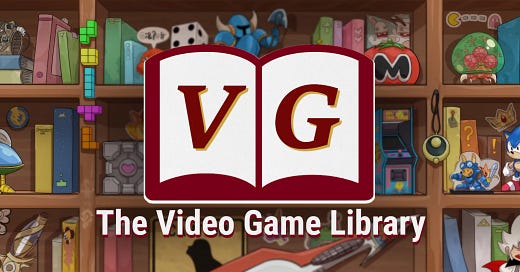






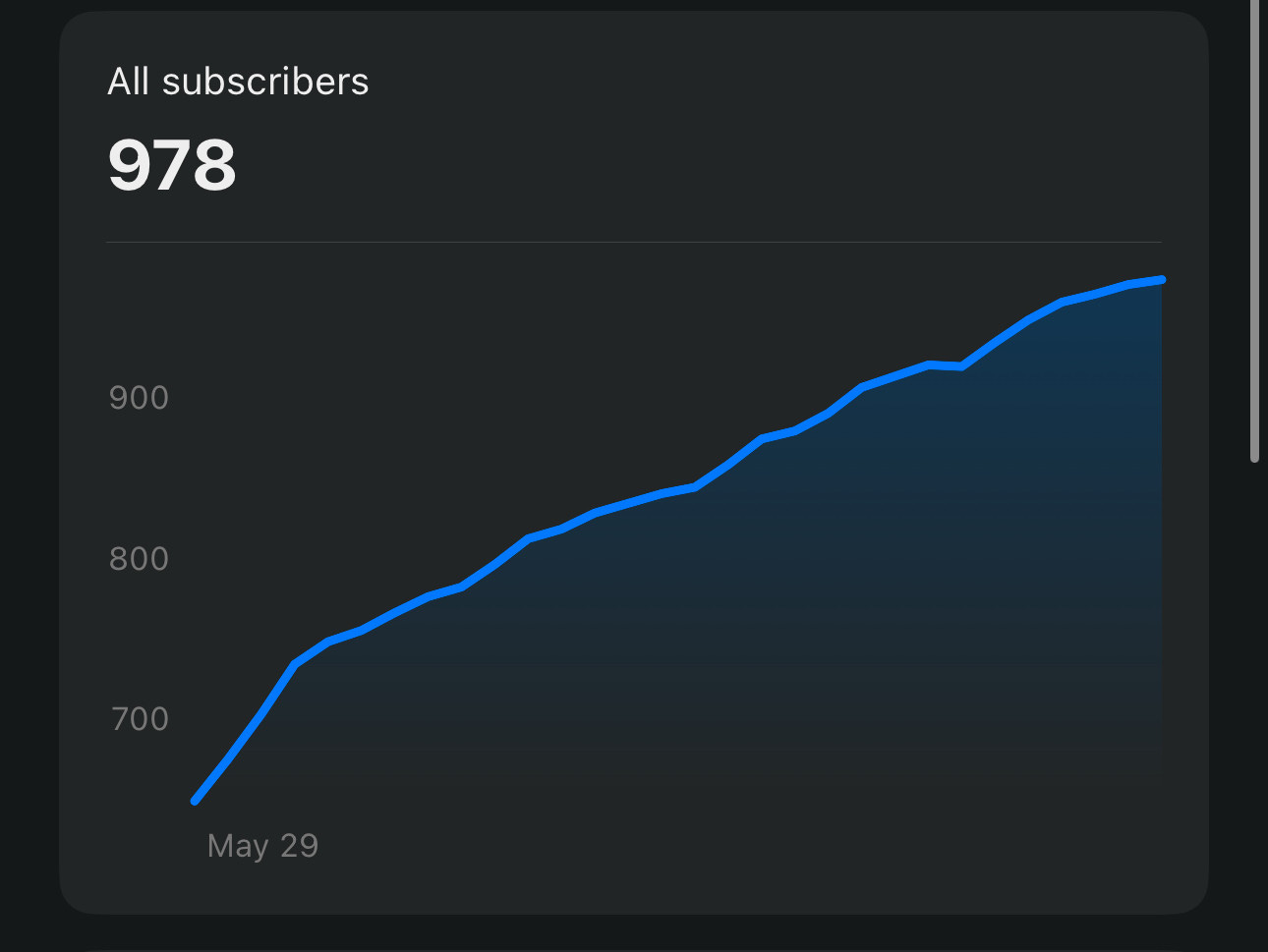

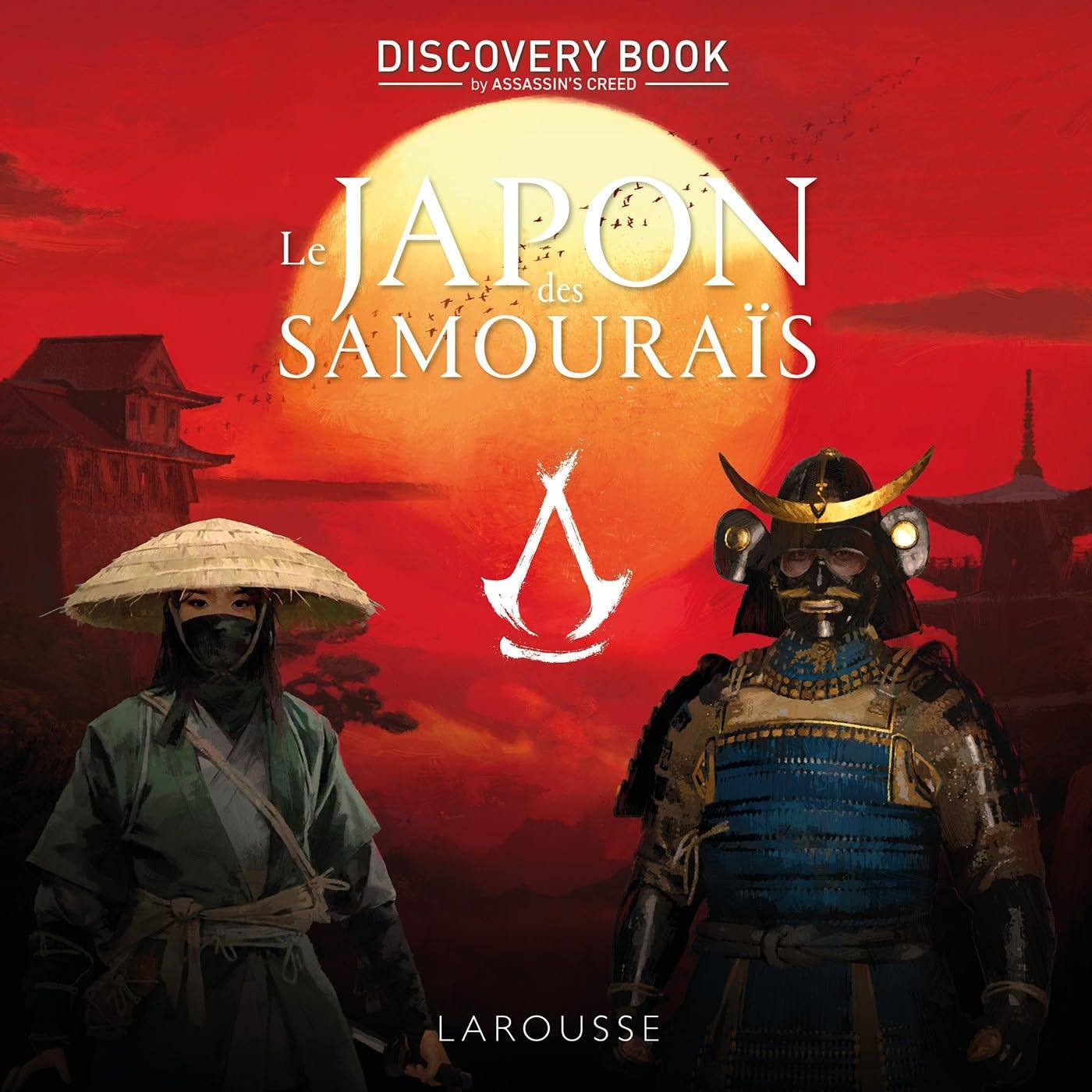
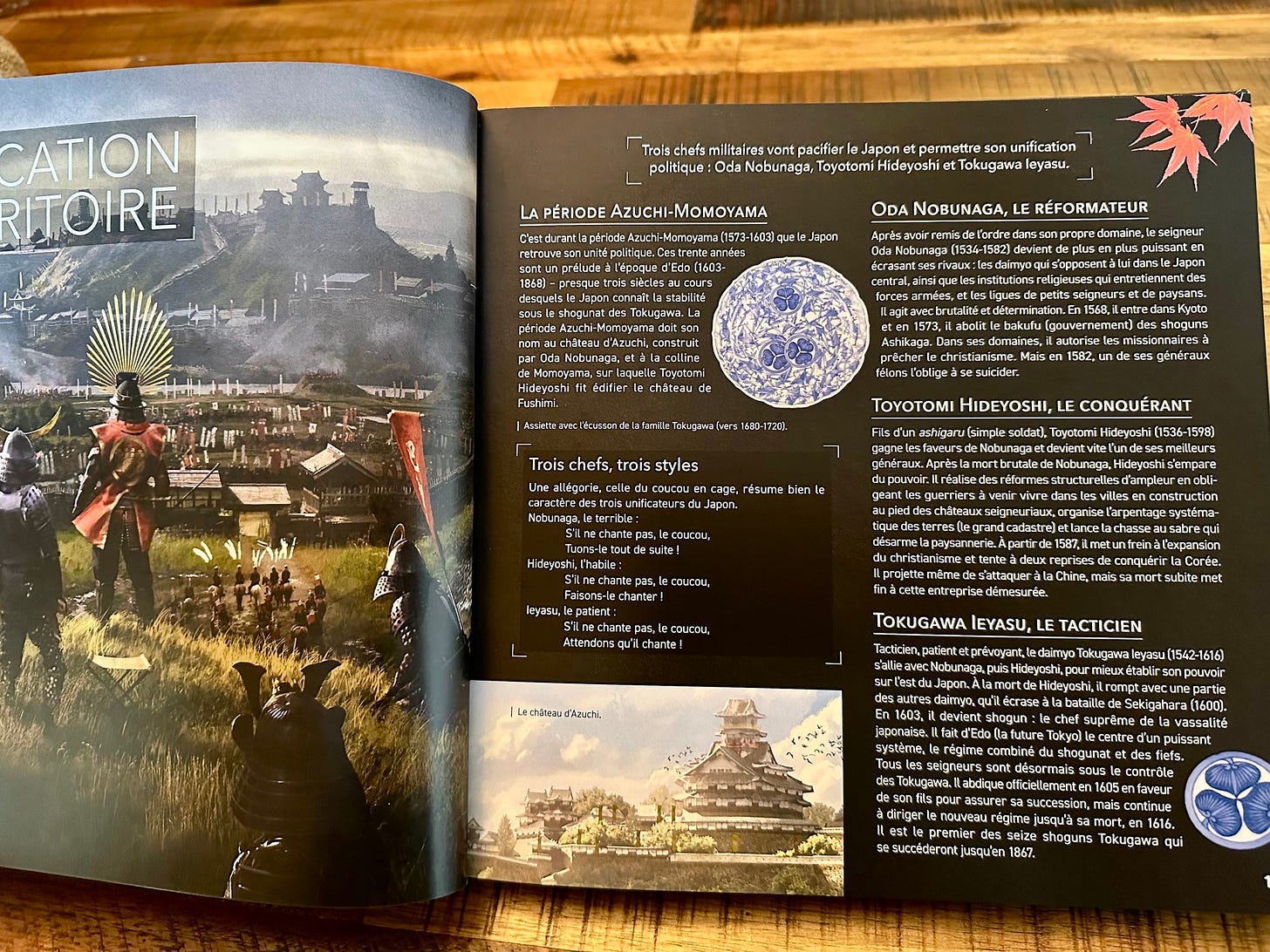

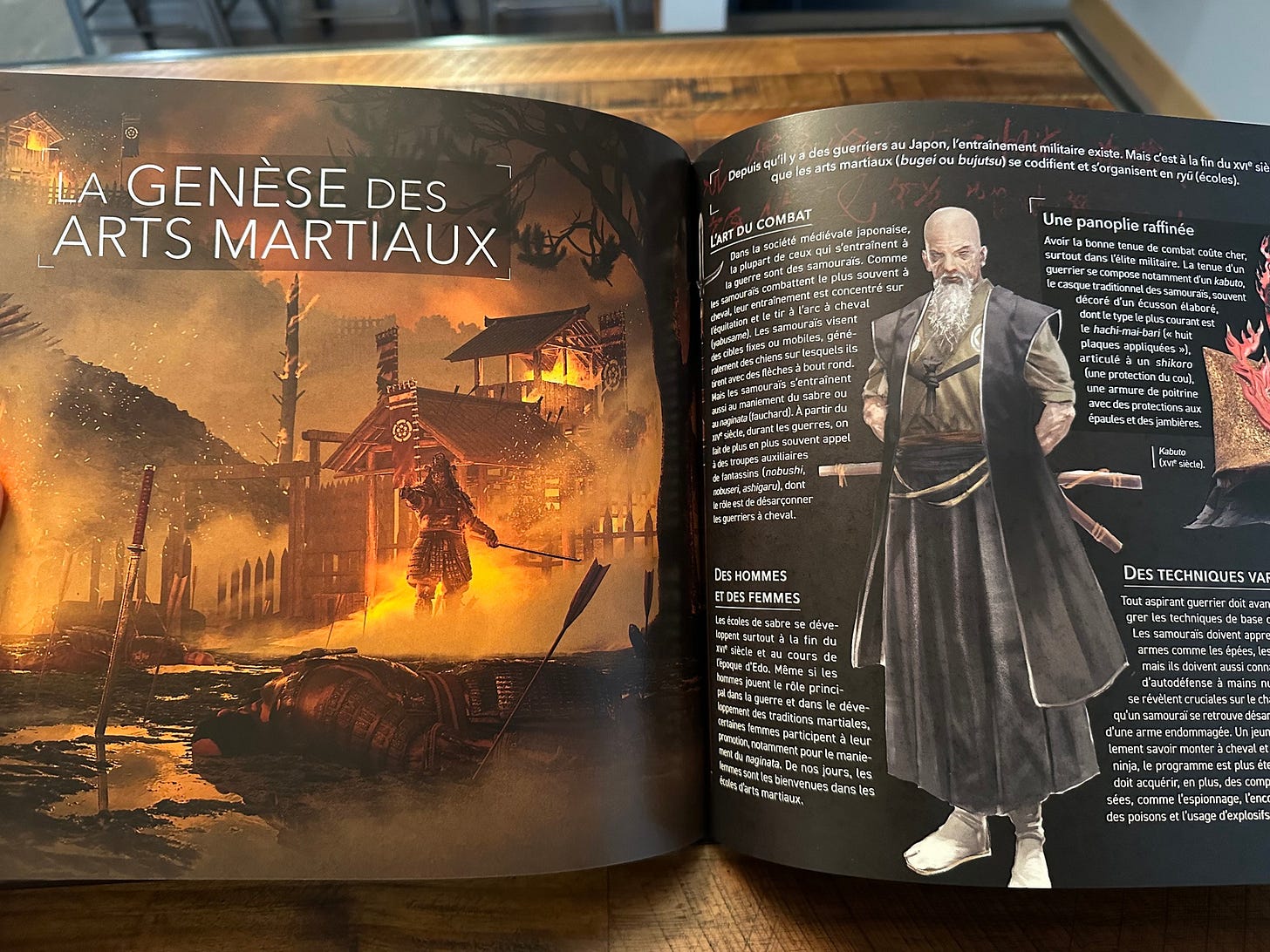
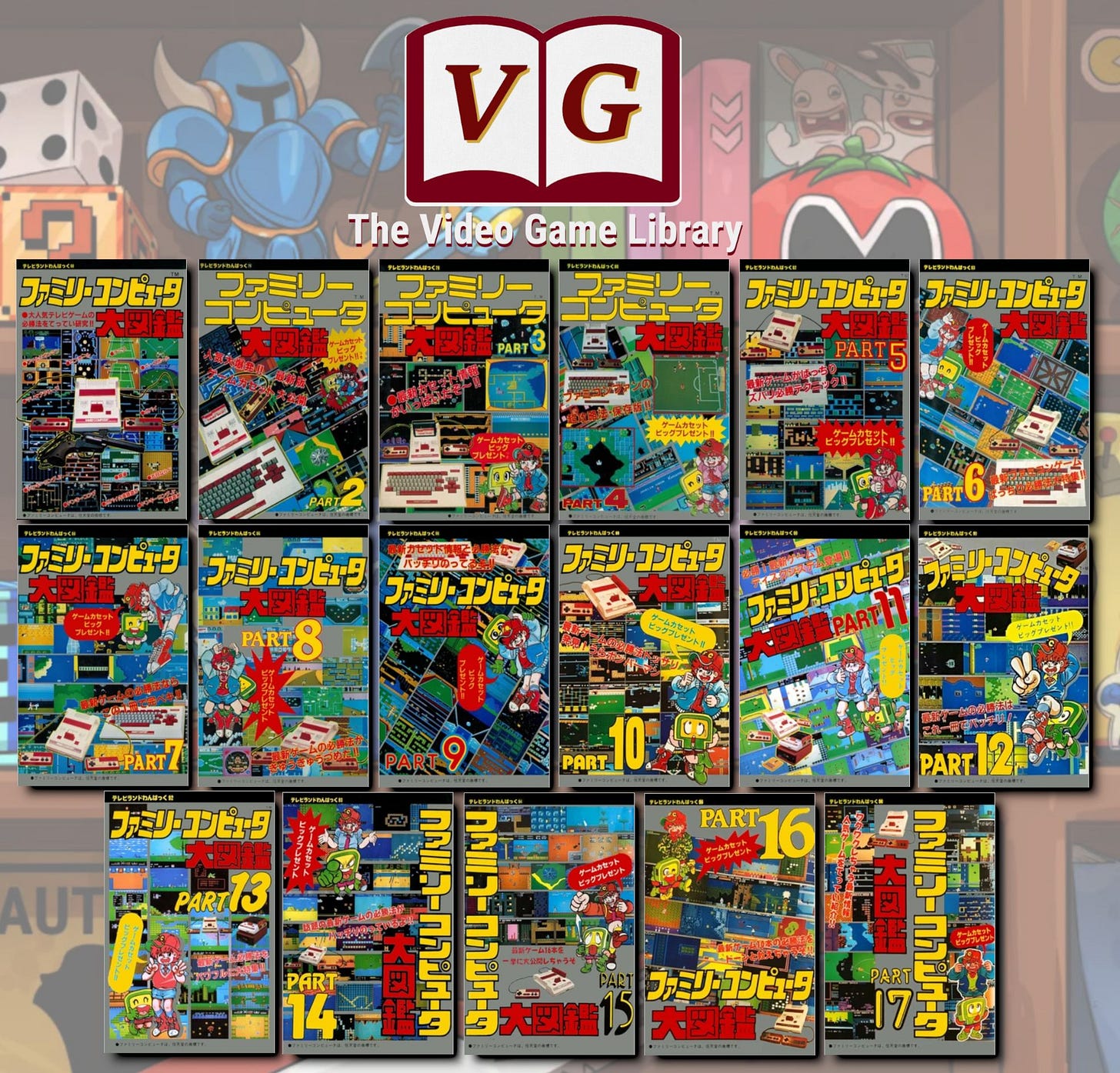

Any chance we can see stop killing games mentioned in a future newsletter?